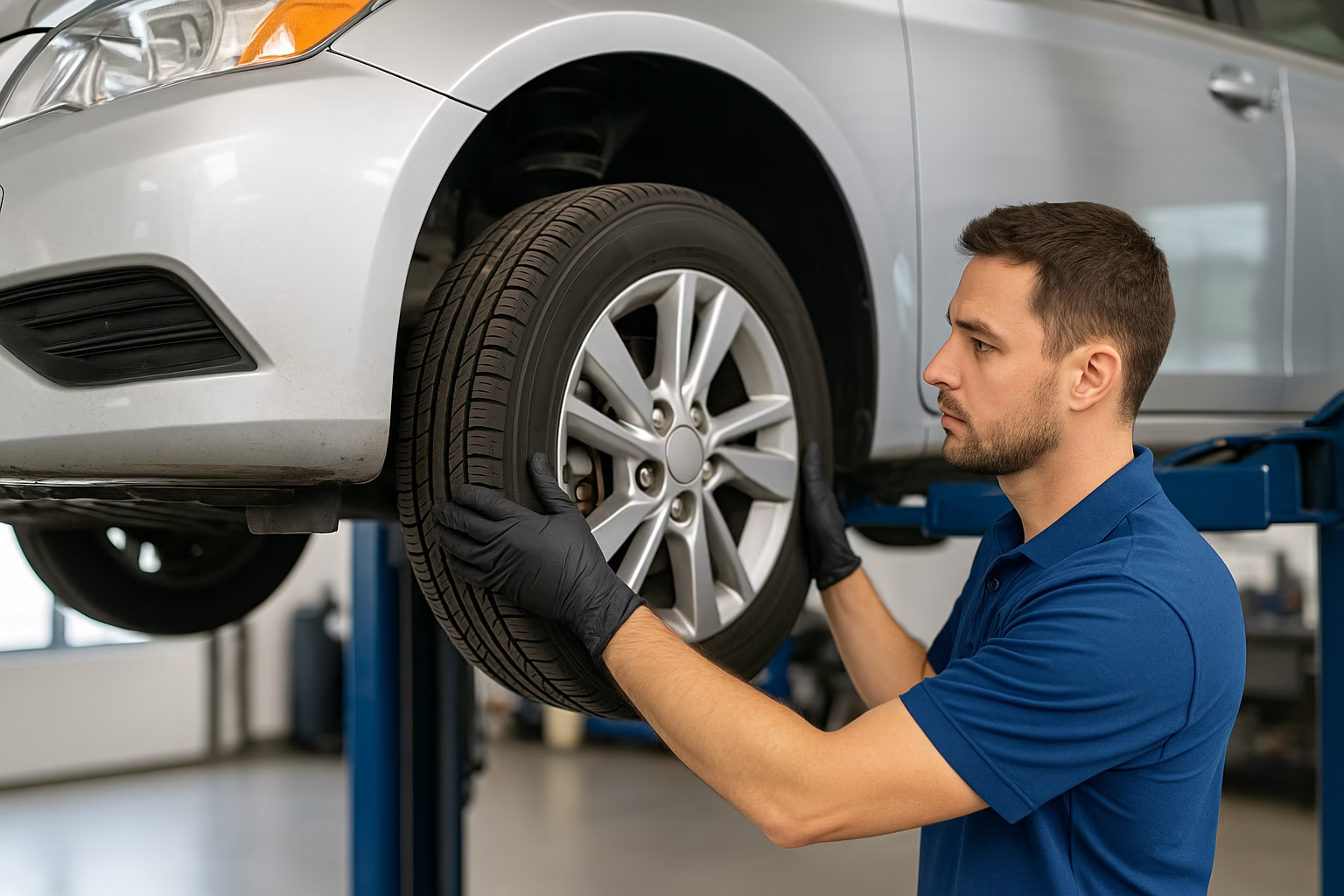Advanced driver assistance systems are finely tuned to the factory geometry of a vehicle. Cameras, radar units and lidar sensors are aimed relative to ride height, wheelbase and track width. When you change springs, fit a lift kit or install wheels and tyres with different diameters or offsets, you alter those reference points. That can throw off sensor angles and distances, reduce the accuracy of lane‑keeping or adaptive cruise and trigger diagnostic codes or warning lights.
Suspension modifications are especially disruptive because they change the pitch and roll of the body. Lifting a ute by 50 mm with new struts and spacers raises the front camera relative to the ground. A lane‑keeping camera that was originally calibrated to look 40 m ahead may now be angled higher, causing it to misinterpret lane lines or lose sight entirely on crests. Lowering a sedan with coilovers has the opposite effect, tilting radar modules downward and reducing their range. Even subtle changes in ride height from worn springs or sagging rear suspension can put sensors outside their acceptable tolerance. After any change to ride height, you must recalibrate the affected systems using the manufacturer’s procedure.
Wheel alignment parameters such as camber, caster and toe are also critical. ADAS sensors assume the vehicle tracks straight down the road; excessive toe‑in or toe‑out can make a forward radar think the car is constantly turning. Negative camber on a lowered car may cause the camera view to skew, increasing the risk of false lane departure warnings. Technicians should always perform a four‑wheel alignment to factory specifications before calibrating ADAS sensors. If the vehicle is modified beyond OEM specs, note the new alignment angles and check whether they fall within the calibration tool’s tolerance. Some manufacturers provide alternate calibration targets or procedures for performance packages, but there are limits beyond which reliable operation cannot be guaranteed.
Tyre modifications can be deceptively influential. Installing larger diameter tyres effectively raises ride height and alters the gear ratio; smaller tyres have the reverse effect. Mixed tyre sizes or uneven wear across an axle changes rolling circumference and can confuse wheel speed sensors. Many lane‑keeping and adaptive cruise systems rely on accurate wheel speed data to calculate yaw rate and vehicle path. A mismatch can cause stability control and ADAS modules to disagree about how fast the vehicle is moving or turning. Always replace tyres as sets and stick to sizes approved for the vehicle. If fitting upsized wheels for style or off‑road capability, measure the overall diameter and adjust calibrations accordingly.
Offset and wheel width also matter because they change the scrub radius and steering geometry. Deep‑dish wheels that push the contact patch outward require more steering angle for the same turn, which can affect lane‑centering assist. Wider wheels may necessitate fender flares or mudguards that block radar or ultrasonic sensors mounted in the bumper corners. Aftermarket wheels with metallic paint or chrome may reflect radar waves differently, leading to reduced detection range. Choose wheels with compatible offsets and finishes, and verify that all sensors have a clear line of sight after installation.
Tyre pressure and wear should not be overlooked. Under‑inflated tyres reduce diameter and can trigger false yaw rate calculations, while overinflated tyres lift the body slightly. Uneven tyre wear can create a diameter difference from side to side. Modern vehicles use indirect tyre pressure monitoring systems that infer pressure from wheel speed differences; this same data feeds into ADAS control modules. Maintaining the correct pressure and rotating tyres regularly helps keep sensor inputs consistent. After fitting new tyres or adjusting pressures significantly, perform a calibration if the manufacturer requires one.
Case examples illustrate these principles. A 4×4 owner installs a 50 mm suspension lift and larger all‑terrain tyres. After driving away from the workshop, the pre‑collision system warning lamp illuminates. A scan reveals a forward radar misalignment code. Inspection shows the radar bracket has not moved, but because the vehicle rides higher and the nose points up, the radar beam overshoots the target board during calibration. Adjusting the radar aim with shims and completing a static calibration restores function. In another case, a compact hatchback owner installs extreme negative camber for a show car look. The lane‑keeping assist becomes erratic, tugging at the steering wheel on straight roads. Measuring camber reveals it is beyond OEM limits; correcting the alignment and recalibrating the camera solves the issue.
Best practices for technicians working on modified vehicles include: performing a thorough alignment to verify suspension angles before any calibration; measuring ride height and documenting how far it deviates from stock; checking that wheels and tyres match approved sizes; ensuring sensors have clear fields of view after modifications; and advising owners that certain modifications may reduce or disable ADAS functions. If a vehicle is modified beyond the manufacturer’s allowed tolerances, document this and obtain the owner’s acknowledgement that some driver aids may not operate correctly. Encourage owners to calibrate ADAS after any suspension or tyre work, not just after body repair or glass replacement.
In summary, ADAS calibration accuracy depends on more than just sensor mounting. The entire chassis geometry affects how sensors perceive the environment. Suspension lifts, lowered springs, aftermarket wheels, tyre size changes and even tyre pressures can shift angles and distances enough to confuse cameras and radars. By understanding these impacts and incorporating alignment and ride‑height checks into the calibration process, technicians can ensure that driver assistance systems continue to operate reliably even on customised vehicles.

Hiran Alwis is an automotive lecturer and ADAS specialist with over 15 years of experience in diagnostics, advanced safety systems, and technical training. He founded ADAS Project to help everyday drivers and workshop technicians understand and safely use advanced driver assistance systems.
